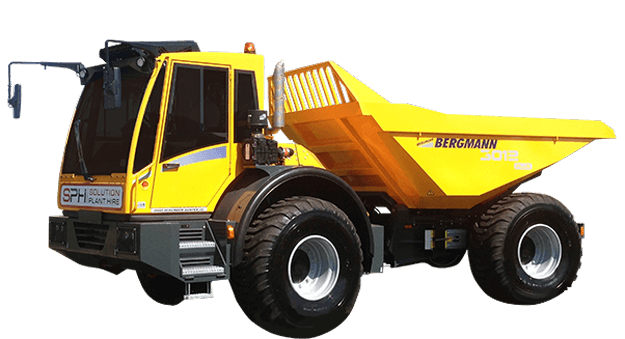
Using a site dumper isn’t exactly rocket science, but as high risk vehicles they’re very easy to get into an accident with. In fact, dumpers are renowned as one of the most accident-prone vehicles commonly used in the construction and mining industries, with some estimates suggesting that they’re involved in a number of job site injuries and fatalities.
The largest on-site cause of fatalities is sadly runovers and backovers, and dump trucks are the most common vehicle involved in these. To put it in the words of the Irish Health & Safety Authority, “the operation of a site dumper is a high risk activity and must be carried out with extreme care”.
It goes without saying that when hiring a dumper, an extra level of vigilance is required. Everybody on-site must be aware of the rules and regulations surrounding the operation of a dumper – not just the driver – and of the potential threat that they can pose for unwary or underqualified staff.
Main causes of accident
The main accident types that dumpers are involved in are:
- Runovers/ backovers.
- Sloping overturns.
- Attempting to move with a high-raise in the lifted position.
- The driver being thrown from the vehicle on uneven ground.
- Inexperienced or underqualified drivers incorrectly manipulating controls.
- Operating unsafely at high speed.
- Operating near trenches or excavations.
- Driving with an overloaded truck.
The vast majority of these circumstances are avoidable with due diligence on the part of both site management and the workers involved.
Responsibilities as the site management
When managing a site, you must assume full responsibility in undertaking risk assessment duties. For dump truck operation, this involves overseeing the site, the vehicle, and the workers involved with manipulation, across all avenues where the truck conducts its duties (due to the busy nature of job sites, this is usually going to be all workers present).
The main responsibilities of a site manager include:
- Filling all unsafe terrain so that trucks can safely pass over them without stalling, dropping load, or losing control.
- Ensuring all workers are equipped and qualified to operate the specific trucks.
- Requiring or offering dump truck training that covers more than just manipulation of controls – it should also include driving under adverse circumstances (rain, mud, etc), inclines, and at night.
- Ensure all workers conduct a risk assessment before stepping foot in a truck.
- Ensure all trucks are equipped with rollover protective structure (ROPS) and seatbelts (we’ll cover this for you).
- Ensuring that communication, both verbal, written, and radio, is enough to convey all necessary information to the driver and personnel nearby.
Responsibilities as a worker
Workers also have a responsibility while on the ground to ensure complete and total safety with dump truck operation. When it comes to risk assessment, both crew and management have to be in accordance with one another to ensure all operational procedures run smoothly.
For example, a worker stepping into a dump truck on a new construction site should trust that management has filled all potholes and uneven ground to a safe level, and ensured that all designated dumping zones are safe, without any fall or run-off.
Conversely, management has to trust that the crew understand all of their safety guidelines, and that safety regulations will be followed accordingly. This should prevent issues of negligence, such as keys being left in the truck, or an idle truck being left without a driver.
The main responsibilities of a worker include:
- Always maintain correct radio communication at all times.
- Avoid slopes or dangerous inclines while driving.
- Ensure proper care is taken to prevent any collisions with other equipment or pedestrians (remember, this is one of the largest causes of workplace injury and fatality).
- Conduct a risk assessment and inspect the vehicle at the beginning of each day that you plan to use the dumper.
- Never overload the truck or operate it under any circumstances if overloaded.
- Never leave the keys in the ignition, or the engine idling, if you’re not inside the truck.
- Unless the original equipment manufacturer (OEM) explicitly states that it is safe to do so, never stay in the truck while it is being loaded. Even if it is, double check that it is fitted with a falling object prevention structure (FOPS). However, we recommend trying to avoid this altogether as a general safety precaution.
A dump truck is a standard piece of equipment, but one that requires extreme diligence and care in operation due to its high risk, and the further risks posed by the construction zones that it usually operates within. Despite this, the Australian Mining and Construction industry remains one of the world’s safest, due to our stringent regulatory and job-site conditions that help keep job sites safe for all.
To find the right dump truck for your construction site needs, contact Solution Plant Hire today on 1300 774 473.



